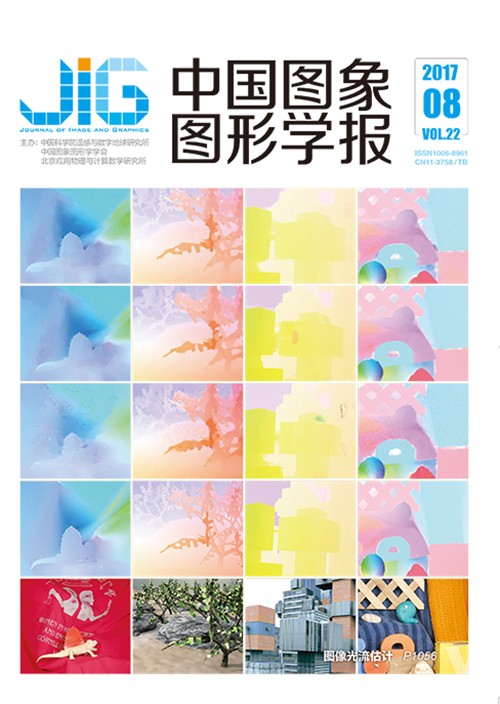
食材数据库统计与对比实验性能分析
摘 要
目的 计算机智能分析用户的饮食是一项有意义的研究课题。传统的分析方法侧重于分析食物类型,可是中国是个美食之国,食物类型在各个区域间表现出极大的多样性,造成很难实现通用的食物自动分类方法。为此尝试针对食物的原材料,即食材进行自动分析收集并建立了一个真实环境下的食材图像数据库(FOOD-SCUT),此数据库包括目前中国市面上常见的70种食材类别,共8 015幅图片。方法 基于此数据库,本文尝试性地利用不同的传统特征和分类方法,对此食材图像数据库进行自动分类,以此来分析对比各种特征和分类方法的性能。对比性实验中所选用的特征包括:SIFT特征、颜色直方图特征、梯度直方图、SURF特征、LBP特征和Gabor特征等。除颜色直方图外其他特征都会利用词袋模型进行特征编码,而所选用分类方法包括:支持向量机(SVM)、朴素贝叶斯、随机森林、K-最近邻(KNN)算法。另外本文还尝试采用最近流行的深度神经网络方法对数据库进行特征学习和分类。结果 通过实验验证基于各种传统特征分类方法的实验性能,其中各种特征包括单特征和多特征组合两种方式,通过不断调整不同特征组合和分类识别算法及其参数,得到基于传统特征分类方法的最好分类性能。同时通过实验验证深度卷积神经网络模型的实验性能,深度卷积神经网络模型使用直接训练和预训练两种不同训练模式,并调整不同的网络层数和权重初始化方法后获得最好的分类识别性能。本食材数据库基于传统特征分类方法的最好分类准确率为88.98%,而基于深度神经网络分类方法上可以获得最佳的实验性能,即95.7%,这个准确率比基于传统特征分类方法高出6.72%。结论 数据库的统计结果表明此食材图像数据库类内数据具有极大的差异,可以作为分析食材的一个基础数据库。此数据库具有极高的应用价值,可以为后续各种基于食材分析应用提供相关分析数据,并且本文实验分析结果,对于后续用户开发相关的各种相关应用中,提供了模型和参数选择的建议,节省了用户选择模型和调参的实验过程。
关键词
Statistical analysis and comparative experimental performance on FOOD-SCUT data set
Guo Lihua, Luo Cai(School of Electronic and Information Engineering, South China University of Technology, Guangzhou 510640, China) Abstract
Objective The intelligent analysis of a user's diet via computer is a meaningful research topic.Traditional methods have focused on food recognition.However, China is a country with diverse food styles.Therefore, designing a generic food recognition method is difficult.This study focuses on food material recognition instead of food recognition.Thus, a FOOD-SCUT image data set is initially collected.This data set includes 70 types of food material that are commonly seen in people's daily lives.The total number of images is 8015.Method This study extracts different traditional features and uses different classification methods in implementing food material recognition to compare the experimental performance.The selected features include scale-invariant feature transform, color histogram features, histograms of oriented gradients, speeded-up robust features (SURF), local binary patterns, and Gabor features.All features are further encoded using the bag-of-words method, and the selected classifiers include the support vector machine, native Bayesian classifier, random forest, and K-nearest neighbor classifier.Moreover, this study designs a deep neural network for food material recognition.Result Various experiments have been performed to test the performance of the proposed food material recognition using different combinations of traditional features.By adjusting different features combination and selecting an appropriate classifier and its optimum parameters, the best recognition accuracy can be achieved using the proposed method based on the traditional features.Experiments further test the performance of the proposed method using a deep convolution neural network.The deep convolution neural network includes two different training modes, namely, direct training and pretraining modes.The best performance can be achieved after selecting different numbers of layer and adjusting the weight initialization method.The final experimental results show that the proposed method can achieve 88.98% recognition accuracy based on the traditional features.However, using the deep convolution neural network can achieve a recognition accuracy of 95.7%, which is 6.72% higher than the proposed method based on the traditional features.Conclusion The statistical analysis of the FOOD-SCUT data set in this study shows the diversity within classes and the similarity between classes.Therefore, this FOOD-SCUT data set can be used for further food material analysis.Moreover, the high application of the FOOD-SCUT data set can provide all original images for the further implementation of food material application.Moreover, the experimental results can provide suggestions concerning the selection of models and parameters to reduce the developing time in future studies.
Keywords
food material classification fined-grain image classification image recognition deep learning convolutional neural network image classification
|



 中国图象图形学报 │ 京ICP备05080539号-4 │ 本系统由
中国图象图形学报 │ 京ICP备05080539号-4 │ 本系统由